Recent Articles
Popular Makes
Body Types
10 Cars with the Smoothest Ride
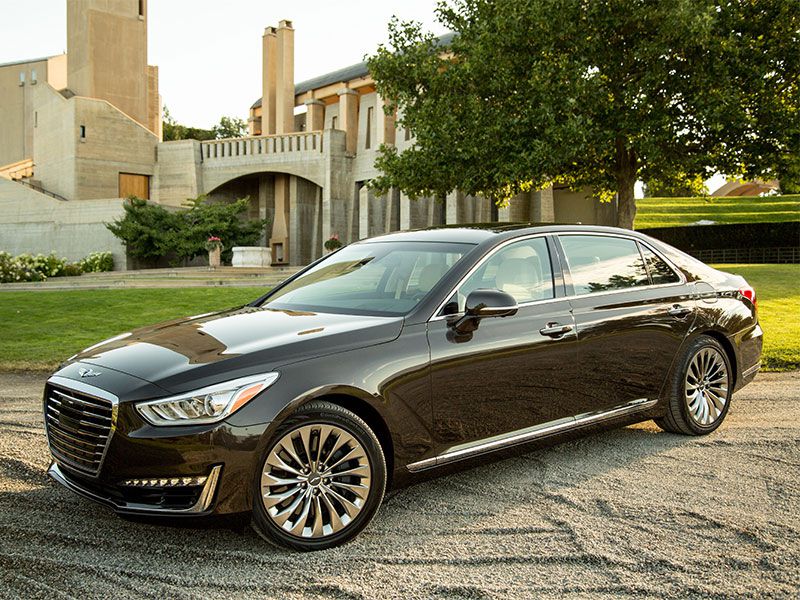
2017 Genesis G90 front angle hero ・ Photo by Genesis
Cars with a smooth ride can provide a blissful haven from rough roads and potholes. Soaking up the stiffest jolts with their increasingly sophisticated technologies, today’s high-tech suspensions can read changes in the road hundreds of times per second. They can also respond nearly instantaneously with damping adjustments that maintain superior cabin composure in almost all conditions. Thanks to multimode drive systems, you can enjoy cruising in velvety comfort if that’s your preference, or you can tighten up the handling for more enthusiastic maneuvers when the spirit takes you as well. Many of the cars with this feature require a little extra "pay-to-play" however, and may result in a trip to a premium-branded dealership. Read on to see our list of cars with the smoothest ride.
2017 Lincoln MKZ
Continuously controlled damping is a key feature for cars with a smooth ride, and the standard system in the 2017 Lincoln MKZ is especially impressive. The system takes into account both driver behavior and road conditions, analyzing each up to 500 times a second to ensure the proper suspension performance.
The MKZ also features a specific pothole detection system that can detect and respond to said hazards by preventing the car’s tires and wheels from dropping as much as they otherwise would have. Beyond the “Comfort” setting on the MKZ’s Lincoln Drive Control, drivers can further dial in “Normal” and “Sport” modes. And yes, the same technology is standard in the 41-mpg MKZ Hybrid.
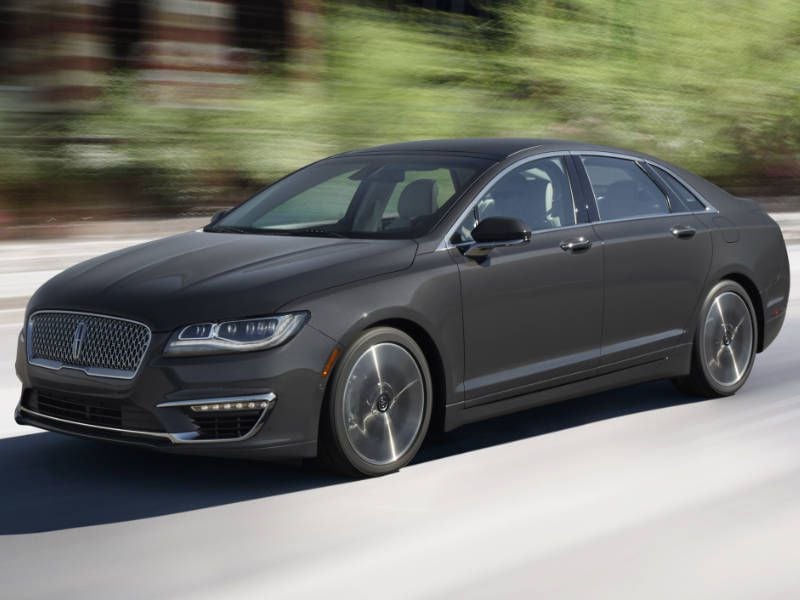
Photo by Lincoln
2017 Cadillac XTS
As you might expect, there’s a full-size Cadillac sedan among our list of cars with the smoothest ride. The 2017 Cadillac XTS is backed by three suspension technologies that work in concert to deliver harmonious handling. The starting point is Magnetic Ride Control. Cadillac calls it the “world’s fastest-reacting suspension,” and it can evaluate road conditions 1,000 times per second—then adjust damping every 5 milliseconds. Complementing the setup are also rear air springs and a front, HiPer Strut suspension. With HiPer Strut, the XTS benefits from better impact isolation, more communicative steering, and decreased torque steer. Also available: a Haldex intelligent all-wheel drive system that can adjust torque between the front and rear axles as well as between the left and right rear wheels.
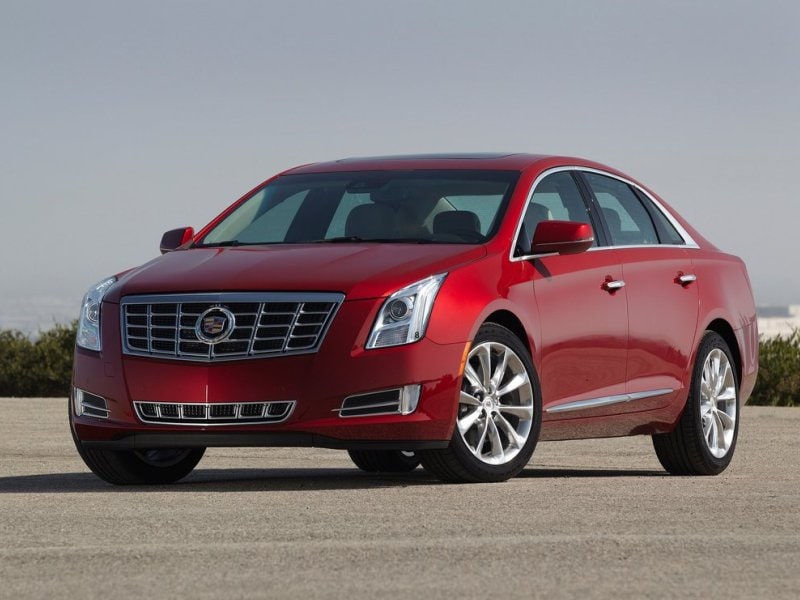
Photo by Cadillac
2017 Buick LaCrosse
Cars with the smoothest ride additionally include the 2017 Buick LaCrosse, which was redesigned for the new model year with a sharp focus on supplying a more premium ownership experience. The 2017 LaCrosse checks in with a fresh appearance and more safety and infotainment tech as part of that mission, while engineers also enhanced its on-road manners. Thus, there’s an available HiPer Strut setup for the front and, for ride improvements at all four corners, a dual-clutch all-wheel drive system and Buick’s own electronic Continuous Damping Control. As for the rear suspension, the LaCrosse introduces a new five-link configuration for 2017, with the brand reporting that it “reduces roll center motion, enables positive lateral control, and promotes dynamic stability.”
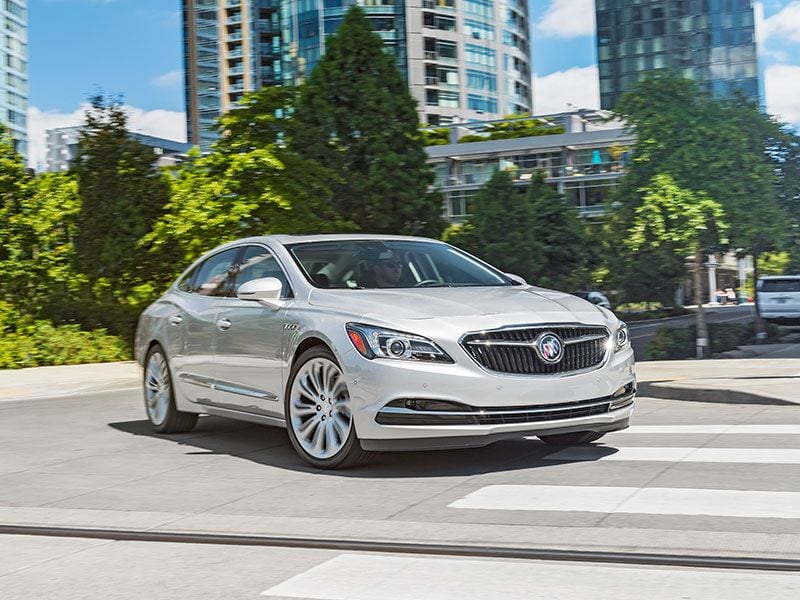
Photo by General Motors
2018 Mercedes-Benz S-Class
Sure, some of the cars with the smoothest ride can rely on fast-reacting suspensions, including some that can respond to road changes in just milliseconds. The 2018 Mercedes-Benz S-Class, however, begins preparing for bumps and imperfections before the car ever gets to them. It’s not magic—it’s Mercedes Magic Body Control. The system relies on a stereo-multipurpose camera that constantly monitors the road ahead of the S-Class. If surface variations are detected, the technology ensures the car’s suspension is optimally adjusted for comfort in advance. Moreover, Mercedes has updated Magic Body Control for 2018, debuting both upgraded road-scanning capability and a “CURVE” function; this can tilt the body of the car when it’s turning, to reduce the centrifugal forces felt by occupants.
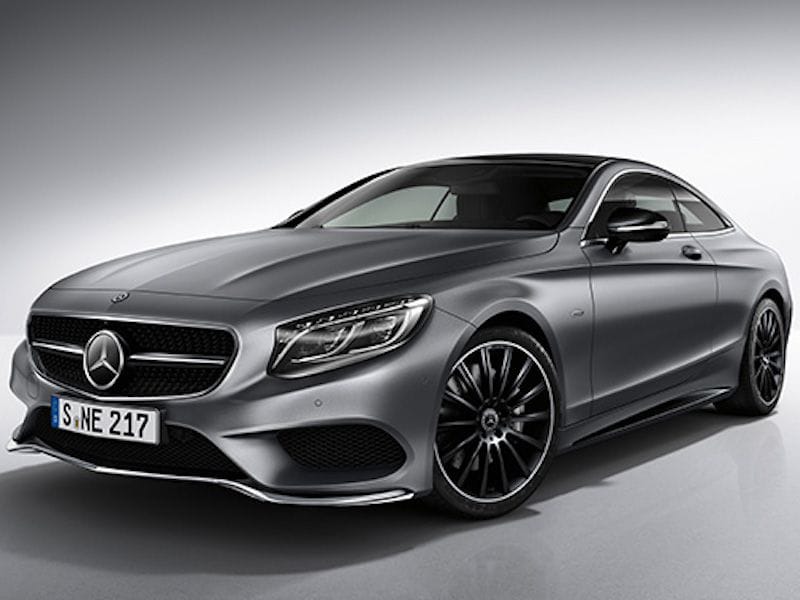
Photo by Mercedes-Benz
2017 Audi A8 L
If you’re shopping for the cars with the smoothest ride, you may want to consider the benefits of an adaptive air suspension, such as the one found in the 2017 Audi A8 L. This technology replaces the traditional metal suspension springs with specially engineered air springs, and in the A8 L, it’s matched with adaptive dampers. These continuously adjust the car’s ride for maximum comfort, responding to road conditions in mere milliseconds. The result is the calm, composed road demeanor that customers demand from a German flagship sedan. For a particularly relaxing ride in the rear seats, an available comfort package serves up heating and ventilation at the outboard back-row positions, along with power lumbar adjustment and a massaging function.
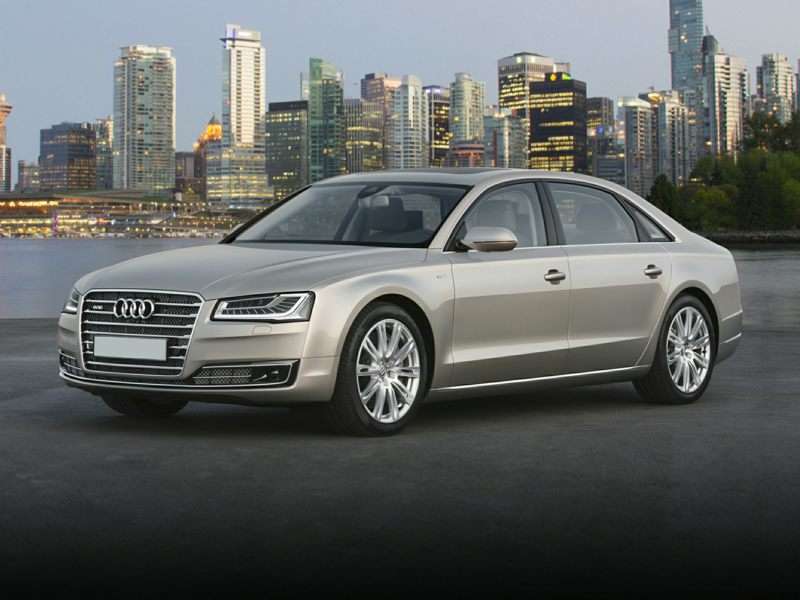
Photo by Audi
2017 BMW 7 Series
Meanwhile, the 2017 BMW 7 Series takes a high-tech route to joining our cars with the smoothest ride. The foundation is a standard self-leveling air suspension with BMW’s Dynamic Damper Control—the latter with both “COMFORT” and “COMFORT+” modes to allow for two levels of tailored ride luxury. Yet BMW also ups the ante with available Active Comfort Drive with Road Preview. The former targets the elimination of body roll in the curves but still offers “the greatest possible freedom of movement” on straight sections of the road, for yet smoother travel in those conditions. A final resource, Road Preview, actually adjusts the suspension for upcoming road scenarios in advance, based on info from the car’s nav system.
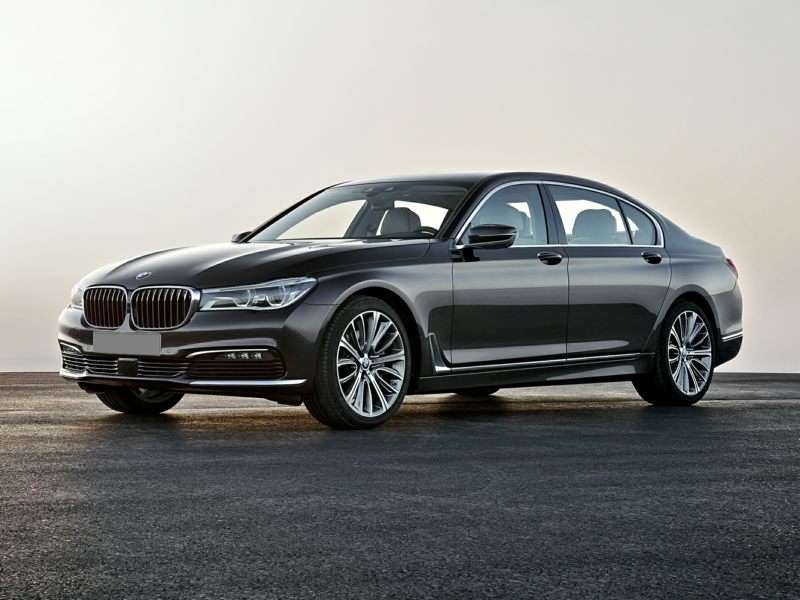
Photo by BMW
2017 Lexus LS
Lexus has long aimed at engineering the cars with the smoothest ride, with the 2017 Lexus LS currently carrying the torch. Definitely helping matters: standard frequency-dependent suspension dampers that combine superior comfort and handling for “the uncanny ride smoothness that has long been a Lexus hallmark.” The LS, like a number of rivals, also builds on its suspension setup with a multi-mode drive system. Leveraging this feature, owners can select the kind of driving experience they prefer, and the technology will automatically adjust key vehicle settings to deliver. An available air suspension adds another layer of luxurious travel. That feature has two ride settings, and it’s the car’s “Comfort” mode, naturally, that provides the smoothest sailing for the Lexus brand’s flagship.
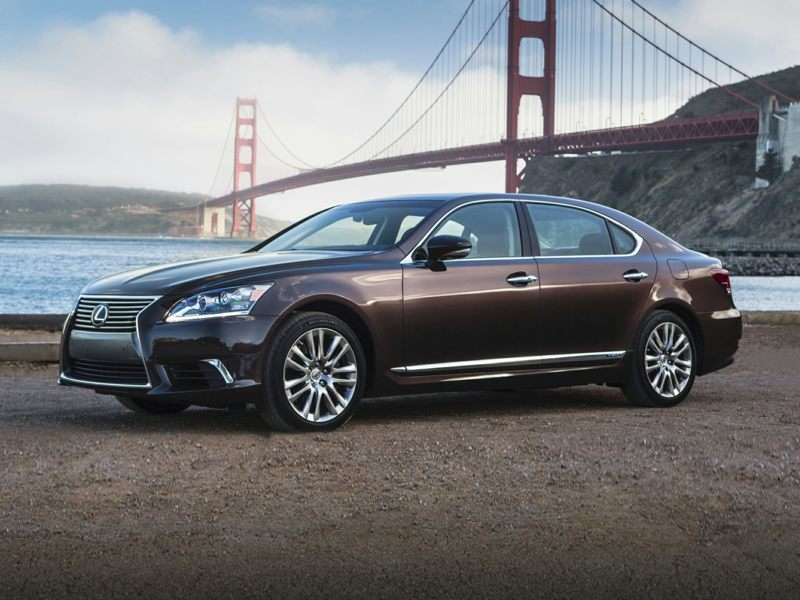
Photo by Lexus
2017 Genesis G90
But it’s not just established brands that boast the cars with the smoothest rides. The 2017 Genesis G90—from the new luxury division of Hyundai Motor Group—is ready to compete against the old guard with a new Adaptive Control Suspension. The setup was designed and engineered by the experts at Sachs/ZF, and a significant highlight is its Dynamic Stability Damping Control functionality—which enables independent damping control for both up and down suspension motions. In terms of other highlights for the G90, shoppers unfamiliar with the Genesis name can rest assured they’ll see flagship levels of luxury, from the car’s 22-way power-adjustable leather seats to a 12.3-inch widescreen infotainment display to an 18-speaker Lexicon audio system.
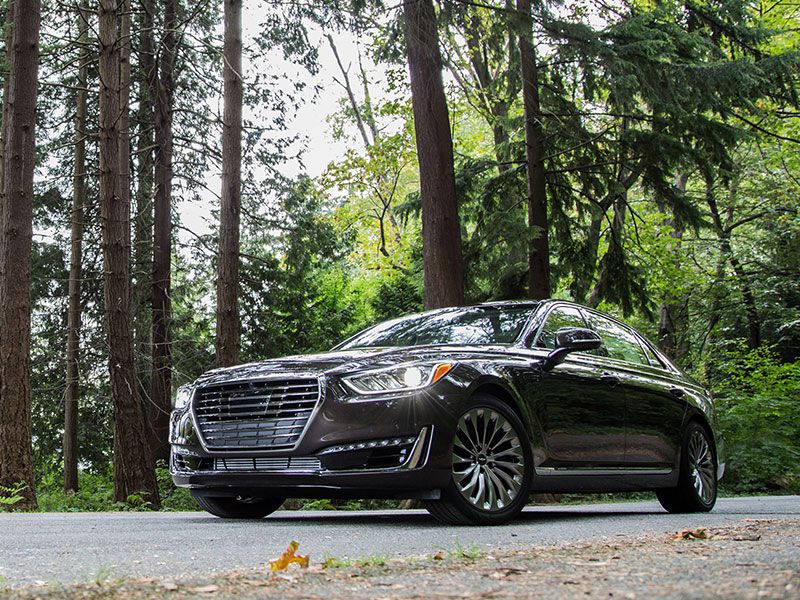
Photo by Genesis
2017 Chevrolet Impala
Back in the day, big American sedans were invariably the cars with the smoothest ride, and that’s a tradition being extended at present by the 2017 Chevrolet Impala. The Bowtie brand’s full-size sedan doesn’t fuss with the fanciest suspension technologies, but it does offer critically acclaimed on-road comfort by making the most of what it does have. For example, the front setup is a fairly common MacPherson strut suspension, yet the Impala raises the bar with rebound springs that are mounted internally, for what Chevy says is “a smoother overall ride” with “enhanc[ed] body-roll control.” A four-link suspension is on duty out back, where engineers also widened the car’s track and installed isolated chassis mounts.
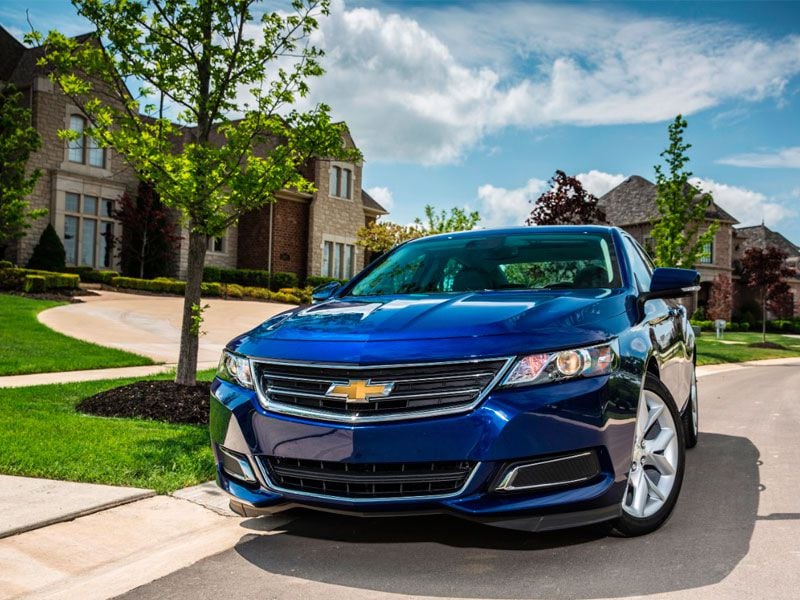
Photo by Chevrolet
2018 Ford Fusion Sport
Obviously, many of the cars with the smoothest ride come from premium brands, since their customers are more willing—and able—to pay extra for extra-capable suspension technologies. The 2018 Ford Fusion Sport, though, is bringing one of those innovations a little closer to the mainstream. Now, the Fusion Sport will undoubtedly be at the top of the roster’s pricing spectrum, but it will debut with a pothole-mitigation system that’s similar to the technology mentioned above in the Lincoln MKZ. Needless to say, the setup gets an athletic makeover for the Fusion Sport, which is understandable. The Blue Oval’s tuned-up mid-size sedan will be motivated by a 2.7-liter EcoBoost V6 engine that’s worth 325 horsepower and 380 lb.-ft. of torque.

Photo by Ford